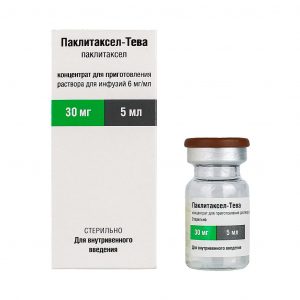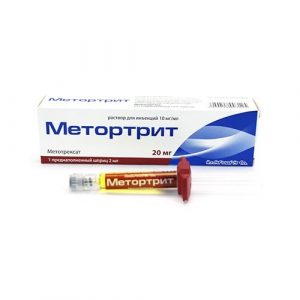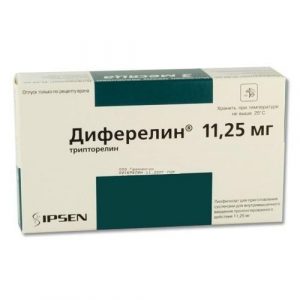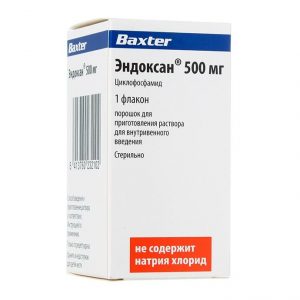Description
Latin name
GEMZAR
Release form
Lyophilisate for solution for infusion.
Packing
In a bottle 1 g of lyophilisate. In a cardboard box 1 bottle.
Pharmacological action
Pharmacodynamics
Antitumor drug, antimetabolite group of pyrimidine analogues. The drug is cyclically specific, acting on cells in the S phases (replication phase) and G1 / S (the gap between the initial growth phase and the replication phase).
Gemcitabine is metabolized inside the cell by nucleoside kinases to form active diphosphate and triphosphate nucleosides. Diphosphate nucleosides inhibit ribonucleotide reductase, which acts as the sole catalyst for the reactions leading to the formation of deoxynucleoside triphosphates necessary for DNA synthesis. Triphosphate nucleosides actively compete with deoxycytidine triphosphate for incorporation into DNA and RNA molecules. After the intracellular metabolites of gemcitabine are inserted into the DNA chain, another additional nucleotide is added to its growing threads, which leads to complete inhibition of further DNA synthesis and programmed cell death, known as apoptosis.
Pharmacokinetics
Distribution of
Plasma protein binding is negligible.
Withdrawal of
T1 / 2 ranges from 32 to 94 minutes. Gemcitabine is rapidly excreted from the body by the kidneys, mainly in the form of an inactive metabolite of 2′-deoxy-2 ‘, 2’-difluoruridine. Less than 10% of the dose given iv is found in the urine unchanged.
System clearance ranges from 30 to 90 l / h / m2.
Pharmacokinetics in special clinical cases
Analysis of pharmacokinetic studies with single and multiple administration of the drug shows that Vd is significantly dependent on gender.
System clearance, which ranges from about 30 l / h / m2 to 90 l / h / m2, depends on gender and age.
Indications
Locally advanced or metastatic non-small cell lung cancer – as a first-line therapy in combination with cisplatin or carboplatin, as well as monotherapy in elderly patients with a functional status of 2
– unresectable, locally recurrent mammary gland or as part of combination therapy with paclitaxel after neoadjuvant and / or adjuvant therapy with the inclusion of anthracyclines in the absence of contraindications to their name the onset of
locally advanced or metastatic urothelial cancer (cancer of the bladder, renal pelvis, ureter, urethra)
locally advanced or metastatic epithelial ovarian cancer as monotherapy or in combination with carboplatin in patients with disease progression after the first line of therapy based on platinum derivatives
locally advanced or metastatic pancreatic cancer
locally advanced or metastatic cancer cervical
bile duct cancer.
Gemcitabine has been shown to be effective in advanced small cell lung cancer and advanced refractory testicular cancer.
Contraindications
Age 18-18
pregnancy
lactation (breastfeeding)
hypersensitivity to gemcitabine or other components of the drug.
Precautions: prescribe the drug in case of impaired liver and / or kidney function, inhibition of bone marrow hematopoiesis (including against the background of concomitant radiation or chemotherapy), acute infectious diseases of a viral, fungal or bacterial nature.
Use during pregnancy and lactation
The drug is contraindicated in pregnancy and lactation (breastfeeding).
Composition
1 bottle contains:
Active substances: gemcitabine hydrochloride 1.14 g, which corresponds to the content of gemcitabine 1 g.
Excipients: mannitol – 1000 mg, sodium acetate – 62.5 mg.
Dosage and administration of
Gemzar ® is administered iv drip for 30 minutes.
Before each administration of gemcitabine, it is necessary to control the number of platelets, white blood cells and granulocytes in the blood. With signs of inhibition of bone marrow function caused by the drug, it is necessary to suspend treatment or adjust the dose.
Non-small cell lung cancer (locally advanced or metastatic), first line of therapy
Monotherapy: the recommended dose is 1000 mg / m2 on days 1, 8, and 15 of each 28-day cycle.
Combination therapy with cisplatin: the recommended dose is 1250 mg / m2 on days 1 and 8 of each 21-day cycle or 1000 mg / m2 on days 1, 8 and 15 of each 28-day cycle. Cisplatin is administered at a dose of 70 mg / m2 on the 1st day of the cycle after the infusion of gemcitabine against the background of hyperhydration.
Combination therapy with carboplatin: the recommended dose is 1000 mg / m2 or 1200 mg / m2 on days 1 and 8 of each 21-day cycle.
Carboplatin is administered at AUC 5.0 mg / ml / min on day 1 of the cycle after gemcitabine infusion.
Breast cancer (unresectable, locally recurring or metastatic)
Combination therapy with paclitaxel: as a first-line therapy for the progression of the disease after neoadjuvant and / or adjuvant therapy, including anthracyclines in the absence of contraindications to them. Paclitaxel is administered at a dose of 175 mg / m2 iv in a drip for 3 hours on day 1 of a 21-day cycle followed by gemcitabine. The recommended dose of the drug is 1250 mg / m2 on the 1st and 8th day of each 21-day cycle.
Before starting combination therapy (gemcitabine + paclitaxel), the absolute number of granulocytes in the blood should be at least 1500 / μl.
Urothelial cancer (cancer of the bladder (locally advanced, metastatic and superficial), renal pelvis, ureter, urethra)
Monotherapy: the recommended dose is 1250 mg / m2 on days 1, 8 and 15 of each 28-day cycle.
Combination therapy with cisplatin: the recommended dose of the drug is 1000 mg / m2 on days 1, 8 and 15 in combination with cisplatin, which is administered at a dose of 70 mg / m2 immediately after gemcitabine infusion on the 1st or 2nd day of each 28-day cycle. Clinical studies have shown that at a dose of cisplatin 100 mg / m2, more pronounced myelosuppression is observed.
Epithelial ovarian cancer (locally advanced or metastatic, resistant to platinum derivatives)
Monotherapy: The recommended dose is 800-1250 mg / m2 on days 1, 8 and 15 of each 28-day cycle.
Combination therapy with carboplatin: the recommended dose is 1000 mg / m2 on days 1 and 8 in combination with carboplatin at an AUC rate of 4 mg / ml / min, which is administered immediately after gemcitabine infusion on day 1 of every 21-day cycle.
Pancreatic cancer (locally advanced or metastatic, including resistant to 5-fluorouracil therapy)
Monotherapy: the recommended dose is 1000 mg / m2 once a week for 7 weeks, followed by a weekly break. Then the drug is administered on days 1, 8 and 15 of each 28-day cycle.
Cervical cancer (locally advanced or metastatic)
Combination therapy with cisplatin: for locally advanced cancer with sequential chemoradiotherapy (neoadjuvant) and for metastatic cancer, cisplatin is administered at a dose of 70 mg / m2 per 1 day of treatment with subsequent hyperhyd the introduction of gemcitabine. Gemcitabine is administered at a dose of 1250 mg / m2 on the 1st and 8th day of each 21-day cycle.
For locally advanced cancer with simultaneous chemoradiotherapy, cisplatin is administered at a dose of 40 mg / m2 followed by (immediately after cisplatin) gemcitabine. Gemcitabine is administered once a week 1-2 hours before the start of radiation therapy at a dose of 125 mg / m2.
Cancer of the biliary tract
Combination therapy with cisplatin: cisplatin is administered at a dose of 70 mg / m2 on day 1 of the cycle amid overhydration followed by gemcitabine. Gemcitabine is administered at a dose of 1250 mg / m2 on the 1st and 8th day of each 21-day cycle.
Dose adjustment
If hematologic toxicity develops, the dose of gemcitabine may be reduced, or its administration may be delayed in accordance with the following schemes:
A. Dose adjustment of gemcitabine within the cycle for urothelial cancer, non-small cell lung cancer, pancreatic cancer as a monotherapy or in combination with cisplatin.
Absolute granulocyte count (in 1 μl)
Platelet count (in 1 μl)
% of the previous dose
> 1000
and
> 100 000
100
500-1000
or
50kp 100 000-1 000 500-100
or
<50,000 Postpone the administration of B. Correction of the dose of gemcitabine in the cycle for breast cancer in combination with paclitaxel. Absolute granulocyte count (in 1 μl) Platelet count (in 1 μl) % of the previous dose ? 1200 and > 75 000
100
1000 – <1200 or srdlkrd spl 7500-75 – and ? 50,000 50 B. Dose adjustment of gemcitabine in a cycle for ovarian cancer in combination with carboplatin. Absolute granulocyte count (in 1 μl) Platelet count (in 1 μl) % of the previous dose > 1,500
and
? 100,000
100
1000-1500
or
75kp 50,000 -100kp Postpone the administration of
. In order to detect non-hematologic toxicity, it is necessary to conduct regular examination of the patient and monitor liver and kidney function. Depending on the degree of toxicity, the dose can be reduced stepwise during each cycle or with the start of a new cycle.
Drug administration should be delayed until, in the opinion of the physician, toxicity is resolved.
Special patient groups
No data suggesting that elderly patients require dose adjustment.
Gemcitabine should be used with caution in patients with liver failure or impaired renal function, as there are no sufficient data on the use of the drug in this category of patients. Mild or moderate renal failure (GFR from 30 ml / min to 80 ml / min) does not significantly affect the pharmacokinetics of gemcitabine.
Gemcitabine has been studied in limited studies of phase 1 and 2 in children with various types of neoplasms. The data from these studies are insufficient to prove the efficacy and safety of gemcitabine in children.
Rules for preparing the solution for infusion
Only 0.9% sodium chloride solution (no preservatives) is used as a solvent.
To prepare an infusion solution, the contents of a 200 mg vial are dissolved in at least 5 ml, and 1 g in at least 25 ml of a 0.9% sodium chloride solution for injection. Each bottle is gently shaken until the lyophilisate is completely dissolved. The resulting solution should be clear.
The maximum concentration of gemcitabine should not exceed 40 mg / ml. In solutions prepared with a concentration of more than 40 mg / ml, incomplete dissolution is possible.
The prepared gemcitabine solution containing the desired dose of the preparation is diluted with 0.9% sodium chloride solution for injection before administration in an amount sufficient for a 30-minute iv infusion.
Before parenteral administration, it is necessary to visually monitor the prepared solution for mechanical impurities and discoloration.
Side effects
Adverse reactions that occurred more often than in single cases are listed according to the following gradation: very often ( 10%)
often ( 1%, <10%) infrequently ( 0.1%, <1%) rarely ( 0.01%, <0, 1%) is very rare (<0.01%). From the hemopoietic system: very often – anemia, leukopenia, thrombocytopenia often – febrile neutropenia very rarely – thrombocytosis. From the side of metabolism: often – anorexia. From the nervous system: often – headache, sleep disturbance, drowsiness. From the cardiovascular system: very often – edema, peripheral edema infrequently – heart failure, arrhythmia, mainly supraventricular rarely – myocardial infarction, decreased blood pressure. From the respiratory system: very often – shortness of breath often – cough, rhinitis infrequently – bronchospasm. From the digestive system: very often – impaired liver function (usually mild, rarely requiring cessation of treatment), nausea, vomiting often – diarrhea, stomatitis, constipation. On the part of the skin and subcutaneous tissues: very often – mild skin rashes, accompanied by itching, alopecia (usually minimal hair loss) often – itching, sweating rarely – ulcers, vesicle formation. From the urinary system: very often – mild proteinuria and hematuria. From the musculoskeletal system: often – back pain, myalgia. Allergic reactions: very rarely – anaphylactoid reactions, anaphylactic reaction. Other: very often – flu-like syndrome (fever, headache, chills, asthenia, malaise) rarely – reactions at the injection site. An increase in body temperature and asthenia are often recorded as separate symptoms. Radiation toxicity was rarely recorded. Post-marketing data for From the cardiovascular system: infrequently – heart failure, arrhythmia, mainly supraventricular rarely – gangrene and peripheral vasculitis very rarely – increased capillary permeability syndrome. From the respiratory system: infrequently – interstitial pneumonitis rarely – adult respiratory distress syndrome, pulmonary edema. With the development of such effects, consideration should be given to discontinuing gemcitabine therapy. Early maintenance treatment can improve the situation. From the digestive system: very rarely – ischemic colitis. From the skin and subcutaneous tissues: rarely – severe skin reactions, including desquamation and bullous skin damage. From the urinary system: infrequently – hemolytic uremic syndrome. At the first sign of any manifestation of microangiopathic hemolytic anemia (for example, a sharp decrease in hemoglobin with concomitant thrombocytopenia, increased bilirubin, serum creatinine, urea or LDH), gemcitabine therapy should be stopped immediately. Renal failure may be irreversible even after discontinuation of therapy and dialysis may be required. On the part of the liver and biliary tract: very often – increased activity of liver enzymes: ACT, ALT, alkaline phosphatase often – increased concentrations of bilirubin infrequently – severe hepatotoxicity, including hepatic insufficiency, rarely – increased activity of GGT. Other: very rare – Lyell syndrome, Stevens-Johnson syndrome, radiation reactions have been reported. Drug Interaction Radiotherapy Concurrent use (combined or at intervals of less than 7 days): toxicity associated with such multimodal treatment depends on many different factors: gemcitabine dosage, frequency type and volume of irradiated tissue. Preclinical and clinical studies have shown that gemcitabine has a radiosensitizing effect. In the only study in which gemcitabine was administered at a dose of 1000 mg / m2 for 6 weeks at the same time as therapeutic chest irradiation in patients with non-small cell lung cancer, significant toxicity was recorded in the form of severe and potentially life-threatening inflammation of the mucous membranes, mainly esophagitis, as well as pneumonitis, especially in patients with high tissue irradiation (median irradiation volume 4795 cm3). Later studies (Phase II studies in non-small cell lung cancer) indicate the feasibility of administering gemcitabine at lower doses with concomitant radiation therapy with predictable toxicity. Radiation therapy for the chest area (SOD 66 Gy) was performed concomitantly with chemotherapy with gemcitabine at a dose of 600 mg / m2 (4 injections) and cisplatin at a dose of 80 mg / m2 (2 injections) for 6 weeks. Several studies I and II f especially in patients with high tissue irradiation (median irradiation volume 4795 cm3). Later studies (Phase II studies in non-small cell lung cancer) indicate the feasibility of administering gemcitabine at lower doses with concomitant radiation therapy with predictable toxicity. Radiation therapy for the chest area (SOD 66 Gy) was performed concomitantly with chemotherapy with gemcitabine at a dose of 600 mg / m2 (4 injections) and cisplatin at a dose of 80 mg / m2 (2 injections) for 6 weeks. Several studies I and II f especially in patients with high tissue irradiation (median irradiation volume 4795 cm3). Later studies (Phase II studies in non-small cell lung cancer) indicate the feasibility of administering gemcitabine at lower doses with concomitant radiation therapy with predictable toxicity. Radiation therapy for the chest area (SOD 66 Gy) was performed concomitantly with chemotherapy with gemcitabine at a dose of 600 mg / m2 (4 injections) and cisplatin at a dose of 80 mg / m2 (2 injections) for 6 weeks. Several studies I and II f Later studies (Phase II studies in non-small cell lung cancer) indicate the feasibility of administering gemcitabine at lower doses with concomitant radiation therapy with predictable toxicity. Radiation therapy for the chest area (SOD 66 Gy) was performed concomitantly with chemotherapy with gemcitabine at a dose of 600 mg / m2 (4 injections) and cisplatin at a dose of 80 mg / m2 (2 injections) for 6 weeks. Several studies I and II f Later studies (Phase II studies in non-small cell lung cancer) indicate the feasibility of administering gemcitabine at lower doses with concomitant radiation therapy with predictable toxicity. Radiation therapy for the chest area (SOD 66 Gy) was performed concomitantly with chemotherapy with gemcitabine at a dose of 600 mg / m2 (4 injections) and cisplatin at a dose of 80 mg / m2 (2 injections) for 6 weeks. Several studies I and II fbases showed that in non-small cell lung and pancreatic cancer, it is more appropriate to perform gemcitabine monotherapy (up to 300 mg / m2 / week) in parallel with radiation therapy. The optimal regimen for the safe administration of gemcitabine with therapeutic doses of radiation therapy has not yet been established for all types of tumors. Consecutive use (interval more than 7 days): except for the radiation response with gemcitabine administration more than 7 days before or after radiation therapy, no increase in toxicity was observed. These data suggest that gemcitabine may be administered one week after radiation therapy or after the acute effects of radiation therapy have been eliminated. And at the same time, and irradiation of irradiated tissues (eg esophagitis, colitis, and pneumonitis) has been reported with the use of gemcitabine with radiation therapy. Other Co-administration with live yellow fever vaccines and other live vaccines is not recommended due to the risk of systemic lethal outcome, especially in patients with immunosuppression. Overdose Treatment: Antidote not known. Clinically acceptable toxicity was observed with single doses up to 5.7 g / m2 i / v for 30 min every 2 weeks. In case of suspected overdose, the patient should be under constant medical supervision, including blood counting. If necessary, conduct symptomatic treatment. Storage conditions Keep out of the reach of children at a temperature of 15 ° to 30 ° C. of the year. The prepared solution should be stored at a temperature of 15 ° to 30 ° C for no more than 24 hours. Expiration 3 years. Deystvuyuschee substances gemcitabine dosage form Dosage infusion solution




